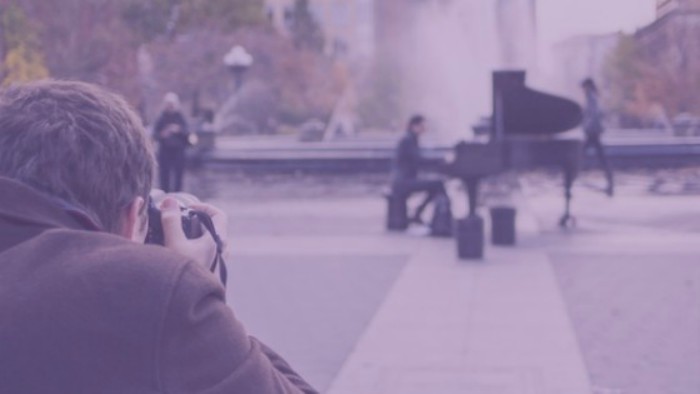In our work with musicians and performing artists, one question we get asked a lot is: How do I stand out?
The competition feels tighter than ever. Opportunities seem scarce. And you want to set yourself apart from the pack.
There’s one simple way to get noticed as an artist—and it doesn’t require you to be a prodigy or have a ton of connections.
Before I spill the details, let’s talk about why you’re not getting noticed in the first place…
Does This Sound Familiar?
You diligently practice your art. Often, you practice famous works to your empty apartment with the dream of performing these pieces to a full house.
But when you reach out to contacts, you never hear back.
Or you go to an audition and feel like you’re trying to “guess” what the director is looking for.
You attend a conference and chat with strangers but nothing really comes of it.
When you do get offered a gig, you might accept it at a rate that’s lower than you hoped.
All of these things make you feel invisible on some level. Like someone else stood out more than you did—someone else got the opportunity you were hoping for. So what went wrong?
You’re Focusing on the Wrong Things
You might think that standing out means that you have to brag about yourself and your accomplishments (which feels inauthentic to you).
Or maybe you feel like you have to be totally different from everyone else—like you need a marketing angle that makes people stop and take notice.
And while these things might work (if done with a strategy in mind), they aren’t the real answer.
You’ve surely heard the phrase, “It’s who you know.” People typically say it when they talk about how to succeed in your life or career.
But there’s a sister phrase that’s more accurate: “It’s not who you know; it’s who knows you.”
Notice the choice of words here. The real secret isn’t about just being noticed. It’s about being known.
The quickest, easiest way to get to be known is to connect to someone on a personal level.
And the quickest, easiest way to connect? Is listening.
The Art of Listening
When you’re trying to make an impression and find people who can help take your career to the next level, it all comes down to listening.
And before you tell me that you’re a great listener, hang tight.
The “listening” I’m referring to isn’t a passive experience. To make genuine connections, it’s important to listen with intention. That means being on the lookout for key words or phrases that help you assess how you can help the person you’re listening to.
Learn to look for words like:
I’m sick of…
…I wish…
…I want to…
…It’s frustrating because…
All of these phrases will give you insight into what the people you want to work with are really looking for.
Repeat Their Words
If you realize that you can help alleviate a frustration or give someone what they’re looking for, tell them so. But here’s the key: echo their own words.
To do this, you can ask questions to gain better understanding of what someone means. You do this by repeating key phrases.
So if someone says, “I just wish we could find someone who knew how to play the piano—and who didn’t expect me to take the lead… Someone who can just take some direction and run with it…”
You would say, “It sounds like you want someone who isn’t afraid to take ownership and allow you to focus on the other things you’ve got going on. Is that right?”
And they’ll say, “Yes! Exactly! My last pianist was great but he thought there was something really specific I was looking for. I just wanted this to feel more collaborative and experimental. I wish he’d come up with his own ideas.”
And you’d say, “If you want someone who can take general direction and run with it [repeating their words], I’d actually be a really good fit.”
“Oh really?” they’ll say.
“Yeah, I feel really comfortable coming up with ideas on my own, then sharing them back and collaborating. Does that sound like what you’re looking for?”
“Yes! When can you start?”
Getting to the point where you can repeat back what someone said takes practice. It involves “unlearning” the habit of always trying to think of the next thing to say. It requires you to stay present and focused, while simultaneously making mental notes of what the speaker is revealing to you.
Go Beyond In-Person Interactions
Listening doesn’t only happen face-to-face. These same techniques can be used on social media, on blog comments, and in emails. In the virtual world, it can feel like a lot of people are talking at us and that no one’s really listening.
If you’re one of the few who listens to understand, echoes the speaker’s sentiments, and shares with them how you can alleviate their pain points, you’ll not only be noticed as an artist—you’ll be known as a valuable, personable, and respectful artist. And isn’t that really what you want?
Share Your Story
Do you notice when someone’s a really good listener? Does it make you more quick to work with them? Leave a comment below.

